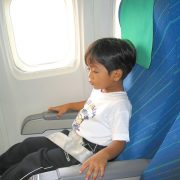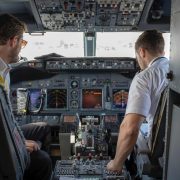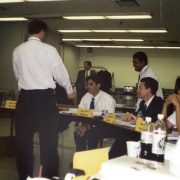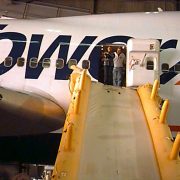What does the term readily accessible mean?
What does it mean to have emergency equipment readily or easily accessible?
Looking for use of the term readily accessible, there is an explanation of “readily accessible” in this legal interpretation: Fire extinguisher on the flight deck.
Given how the previous legal interpretation referenced Webster’s Dictionary, for the purpose of defining “easily,” Merriam‐Webster’s dictionary defines “easily” as: in an easy manner: without difficulty.
So, for emergency equipment to meet the definition of readily accessible, the equipment must be acquired in an easy manner, and without difficulty. For example, the equipment should be stowed and secured with the required brackets, yet nothing excessive that would significantly affect the accessibility of the equipment, such as lock and key to secure the equipment bin.
Looking at the provided legal interpretation, there appears to be additional meaning to the full term “readily accessible” when speaking to fire extinguisher(s) on the flight deck, as it is broken down to “accessible (within reach)” and “readily.” “If the crew must hesitate to retrieve the fire extinguisher by either removing an oxygen mask or by leaving the crewmembers seated position, the emergency equipment is not ‘readily accessible’.”
The term the FAA primarily uses in its regulations is “readily accessible,” describing a crewmember’s ability to reach emergency equipment. Looking at the provided legal interpretation, there appears to be additional meaning to the full term “readily accessible” regarding fire extinguishers on the flight deck, as it is broken down to “accessible (within reach)” and “readily” – If the crew must hesitate to retrieve the fire extinguisher by either removing an oxygen mask or by leaving the crewmembers seated position, the emergency equipment is not ‘readily accessible’.”
Readily accessible and conveniently located
With regard to cabin emergency equipment, refer to 14 CFR 121.309 Emergency Equipment
(b) Each item of emergency and flotation equipment listed in this section and in §§121.310, 121.339, and 121.340—
(2) Must be readily accessible to the crew and, with regard to equipment located in the passenger compartment, to passengers;
(3) Must be clearly identified and clearly marked to indicate its method of operation; and
(4) When carried in a compartment or container, must be carried in a compartment or container marked as to contents and the compartment or container, or the item itself, must be marked as to date of last inspection.
(c) Hand fire extinguishers for crew, passenger, cargo, and galley compartments. Hand fire extinguishers of an approved type must be provided for use in crew, passenger, cargo, and galley compartments in accordance with the following:
(3) Galley compartments. At least one hand fire extinguisher must be conveniently located for use in each galley located in a compartment other than a passenger, cargo, or crew compartment.
(5) Passenger compartments. Hand fire extinguishers for use in passenger compartments must be conveniently located and, when two or more are required, uniformly distributed throughout each compartment. Hand fire extinguishers shall be provided in passenger compartments as follows: (the number of extinguishers required is based on the number of passenger seats installed.)
(6) Notwithstanding the requirement for uniform distribution of hand fire extinguishers as prescribed in paragraph (c)(5) of this section, for those cases where a galley is located in a passenger compartment, at least one hand fire extinguisher must be conveniently located and easily accessible for use in the galley.
(f) Megaphones. Each passenger‐carrying airplane must have a portable battery‐powered megaphone or megaphones readily accessible to the crewmembers assigned to direct emergency evacuation, installed as follows:
(1) One megaphone on each airplane with a seating capacity of more than 60 and less than 100 passengers, at the most rearward location in the passenger cabin where it would be readily accessible to a normal flight attendant seat. However, the Administrator may grant a deviation from the requirements of this subparagraph if he finds that a different location would be more useful for evacuation of persons during an emergency.
The term “readily accessible” generally means emergency equipment conveniently located near flight attendant stations and galleys, as defined by regulation, and stowed and secured in a nearby location, such as an overhead bin, near a jumpseat, etc., depending on the plane’s configuration. Additionally, only emergency equipment is stowed in the designated stowage space, meaning no personal items, no passenger baggage, etc. That stowage location is exclusive for emergency equipment.
Supplemental Type Certificates
Regarding the megaphone, as noted in subparagraph (f)(1), a deviation from a “readily accessible” stowage location may be granted, so it’s possible megaphones are not always within immediate reach of a flight attendant. In addition to the deviation, there may be different variations to equipment location when requested through the use of a Supplemental Type Certificate (STC) for aircraft, found in the FAA Regulatory and Guidance Library.
This explanation is lengthy, yet provides a detailed explanation to help explain what is meant by “readily accessible” with regard to emergency equipment for use by crewmembers.










Leave a Reply
Want to join the discussion?Feel free to contribute!